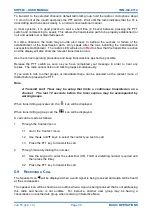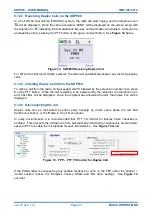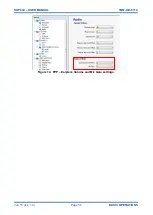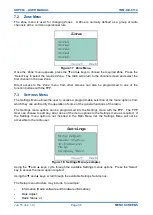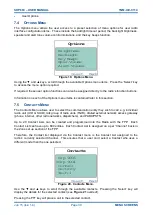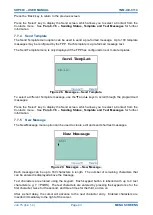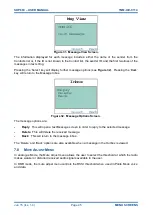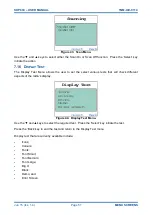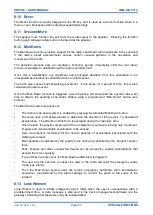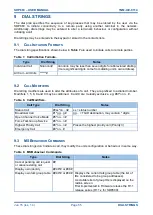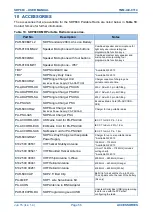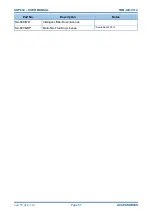
SDP660 – USER MANUAL
TNM-U-E-0114
Jun 15 (Iss. 1.4)
Page 42
MENU SCREENS
To return to the Messages Menu, press the ‘Back’ key.
7.7.2
Outbox
The Outbox is used to store the transmitted (sent) messages. Up to 20 messages can be stored in
the outbox. These messages are volatile, which means that, at radio start-up, the outbox will be
empty.
Figure 26. Messages
– Outbox.
For each sent message, the Outbox displays either details of the recipient from the Contacts list or,
if the ID is not known to the Contact list, the recipient’s UID. If no messages are stored, ‘No
Messages’ is displayed.
To scroll through the stored mess
ages, use the▼ and ▲ keys.
Pressing the ‘Select’ key will display the selected Message. Pressing the ‘Select’ key again will
give ‘Reply’ and ‘Delete’ options.
To return to the Messages Menu, press the ‘Back’ key.
7.7.3
Send Status
The Send Status menu option can be used to send a short Status message to another party. Up to
10 Status lists, each containing up to 250 status message entries can be created and pre-
programmed into the radio using the FPP. Each status message entry consists of a unique
Number and Text. Each Number may range from 0 to 1023. One status list may be attached to
each zone-channel.
Figure 27. Messages
– Send Status.
The information displayed on the Send Status message screen shows the unique number and the
text of the status message.
To select a different Status message, use the▼ and ▲ keys to scroll through the programmed
status messages. Each Status message will be displayed in turn.
Back
Select
Send Status
Status One
1
Back
Select
Outbox
Disp 600
SDM 202
Disp 600



